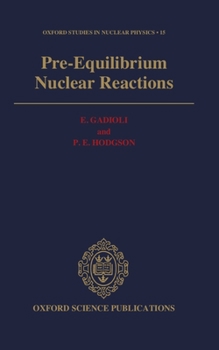Pre-Equilibrium Nuclear Reactions
When a projectile and a target nucleus interact, creating a composite nucleus, the energy initially concentrated on a few nucleons spreads through the composite nucleus, which evolves towards a state of statistical equilibrium. During this equilibration process, nucleons, or aggregates of nucleons, having considerable energy, may be ejected. This book gives a comprehensive and up-to-date account of the experimental and theoretical research that has been devoted, during the past 25 years, to the study of these pre-equilibrium reactions. After a historical introduction, the theories of the reactions are described in detail, beginning with the phenomenological exciton and master equation theories and going on to the fully quantum-mechanical theories of Feshbach, Kerman and Koonin, Tamura and Udagawa, and Weidenmuller and colleagues. The multistep compound and multistep direct theories are considered separately, and all the theories are extensively compared with experimental data. A detailed account of compound nucleus reactions is also included, together with a review of the theories of the nuclear-level densities that are needed to evaluate pre-equilibrium cross-sections. The main emphasis of the book is on nucleon-induced reactions, but those due to composite particles and heavy ions are also considered.
Format:Hardcover
Language:English
ISBN:0198517343
ISBN13:9780198517344
Release Date:April 1992
Publisher:Clarendon Press
Length:536 Pages
Weight:2.30 lbs.
Dimensions:1.4" x 6.5" x 9.6"
Related Subjects
Engineering Science Science & Math Science & Scientists Science & Technology TechnologyCustomer Reviews
0 rating





